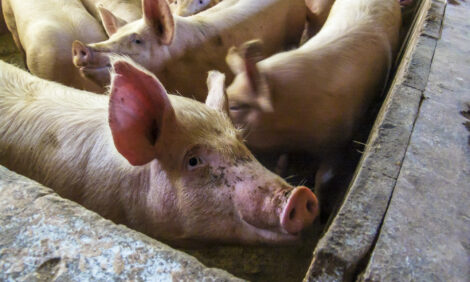



ASF Jumps from Southern to Northern Russia
RUSSIA - The deadly pig disease African Swine Fever (ASF) has jumped 2,000 kilometres from southern Russia to St Petersburg in north-western Russia.The latest outbreak was found near the Baltic city on 20 October confirming the worst fears of FAO experts who have been tracking the virus in Georgia and neighbouring countries for several years.
The danger is that ASF - which can not be transmitted to humans - could spread to other regions including the European Union countries, Eastern Europe, the Black Sea basin countries and - in the worst case scenario – central Asia and even China, which has the largest pig population in the world.
Baltic worries

“Although we have known that the virus has been circulating in the Caucasus – in Georgia, Armenia and Azerbaijan - for several years now, eventually spreading to southern Russia, it is its sudden appearance far away near the Baltic coast that is worrying,“ said Juan Lubroth, FAO’s Chief Veterinary Officer.
The virus shows both progressive local spread and also that it can be transported over wider geographic areas through the movement of infected swine or contaminated pork products.
China threatened
“The Baltic Republics together with the Ukraine, Belarus, Moldavia, Romania and Bulgaria are directly threatened,“ said Mr Lubroth. “That means there could be possible incursions into the EU and also it could spread across Russia, including eastwards into Siberia and perhaps eventually China.“
Although Moslem populations do not consume pork, Iran, Turkey and central Asia could form a transit point for the virus because of relatively large numbers of wild boar in these areas. The clinical signs of ASF are very similar to classical swine fever virus and the two diseases have to be differentiated by specialised diagnostic laboratories.
“In the light of this outbreak, FAO is advising countries to be vigilant and roll out their early detection and response plans,“ said Lubroth. Earlier this year, FAO’s Emergency Prevention System in animal health matters provided regional training courses for veterinary authorities in Ukraine and Belarus.
ASF in pig food
ASF is believed to have entered into the Caucasus through the Black Sea port of Poti, Georgia, where garbage from a ship was taken to a local dump where pigs would come to feed.
Contaminated pig swill - remainders of food, including a pork scrap that is then fed to swine - has also been implicated as a conduit for outbreaks in swine populations in the past.
In a sub-Saharan context the virus is spread through transmission in warthogs and other wild pig species and can be transmitted by a particular type of tick.
Local spread can occur from direct contact between pigs, and direct transmission is a growing problem. ASF existed for decades in the Iberian Peninsula until it was eliminated in the late 1990s.
A very limited focus of the infection is still present in the Italian island of Sardinia. In 1960’s through the 1980s, ASF outbreaks were reported in several European and Caribbean countries and Brazil.
No vaccine yet
There is currently no vaccine against ASF. FAO calls for a renewed effort by laboratories in the US, Europe and the Russian Federation to develop an effective vaccine against ASF. The disease is usually eradicated by the culling of infected animals and strict movement control.
Improved hygiene is production and feeding practices are useful in preventing the introduction of the disease in piggeries and swine holdings. African swine fever is caused by a virus and is not related at all to the H1N1 virus that is responsible for the current human influenza pandemic.
Further Reading
| - | Go to our previous news item on this story by clicking here. |
| - | Find out more information on Africa Swine Fever by clicking here. |








